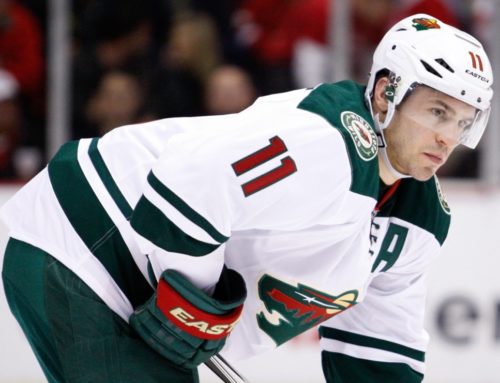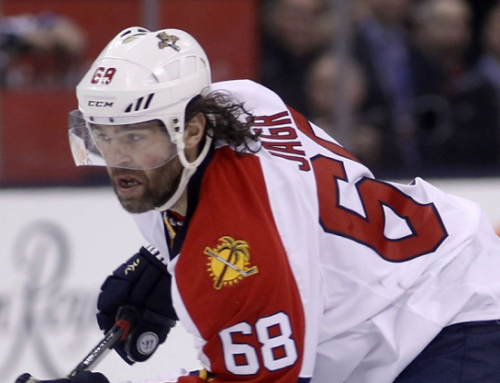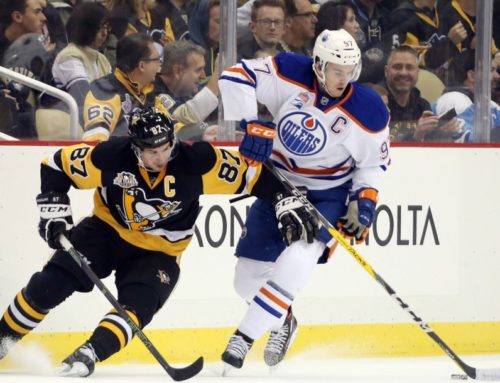
Is True Shooting Percentage the one stat that can determine whether a player will have an up or down year?
“Even a blind squirrel finds the occasional nut and if you make enough predictions, well . . . you’ll probably be right sometimes,” said Ian Cooper from The Department of Hockey Analytics. This came as a special article published in the Toronto Star on October 2, 2014.
I came across this article while doing some other research and felt it would be a good opportunity to see if what was said held true or not. After all, it is prediction season yet again, and I would like to find all the advantages I can get. Certainly you would too.
Cooper believes that, “One official NHL stat that routinely gets overlooked by most commentators is shooting percentage,” and he expands, “we like to track a statistic called true shooting percentage (True Sh%)”.
Take all the shots that end up as goals and divide it by all the attempted shots a player makes and that is the player’s True Sh%.
Where he is going with this is clearly indicated in the title of his article, “For NHL pools, pick players with lower than career true shooting percentage”.
He explains, “True Sh% bounces around a lot from season to season, but over time it tends toward that long-term average,” and “Those in the fancy stats world call this phenomenon ‘mean reversion’.”
The clinching statements are strong too. “Being aware of mean reversion is critical if you’re trying to figure out who will have an ‘up’ year and who is due to fall to earth,” and “This is information you’ll want to keep close at hand rather than relying on the glorified random guesses of the so-called pundits.”
It is so simple, so easy. In a jiffy, we can turn iron into gold.
The article contains two charts of players. There are 14 overachievers and 19 underachievers identified. We will start with the overachievers.

Capitalized Trend Down means the result was strong; lowercase means that it was weak.
Outcome vs Expectation is only of the 5 on 5 Goals, positive values means that the prediction was true or better, negative values means that the expectation was not met.
Total Point Differential is the player’s point change from the 2013-14 to the 2014-15 season.
The end result clearly illustrates that True Sh% was something to consider. Take that you blind squirrels!
We will finish off the evaluation with the underachievers.

Capitalized Trend Up means the result was strong; lowercase means that it was weak.
Outcome vs Expectation is only of the 5 on 5 goals, positive values means that the prediction was true or better, while negative values means that the expectation was not met.
Total Point Differential is the player’s point change from the 2013-14 to the 2014-15 season.
Oh my, you better hold on to your bag of nuts there, Skippy!
The results for Cooper’s theory looked so promising. It is difficult to understand why close to two-thirds of the underachievers did not live up to their True Sh%, except most stories of turning iron into gold end up being false. In fact, if you ‘blindly’ followed Cooper’s ‘critical’ advice you ended up acquiring more rusty iron and fool's gold than anything else.
To avoid selecting over-inflated players is important, but the main point of the article was to pick players that were undervalued. You still have to draft a team and you do not do that without actually picking players. Following this method would not have helped you as much as Cooper claimed it would.
This is one of my biggest complaints about relying solely on formulae, especially just one formula, to base your player selections on.
Sure the concept sounds logical and seems true, but it is all based on you forgetting that “True Sh% bounces around a lot from season to season”. In its place we are to make decisions based on ‘mean regression’.
Unfortunately hockey pools, even those that are keepers, have winners determined for each season. Not for long periods of time like decades or careers.
Do not get sucked into that kind of logic again this year. If you haven’t already, purchase Dobber Hockey’s 2015-16 Fantasy Guide. His predictions take many factors into account.
If you opt for something else that looks quick and easy such as Cooper’s formula, those darn squirrels will steal all your nuts right from under your nose yet again.
P.S. If you think making predictions is easy, give my Top 50 Free Contest a try.
A few people found it hard to get past the top ten players when building their lists for last year’s contest.
But that won't be difficult for you, would it?





 EDM
EDM DAL
DAL CAR
CAR L.A
L.A FLA
FLA ANA
ANA NYR
NYR
